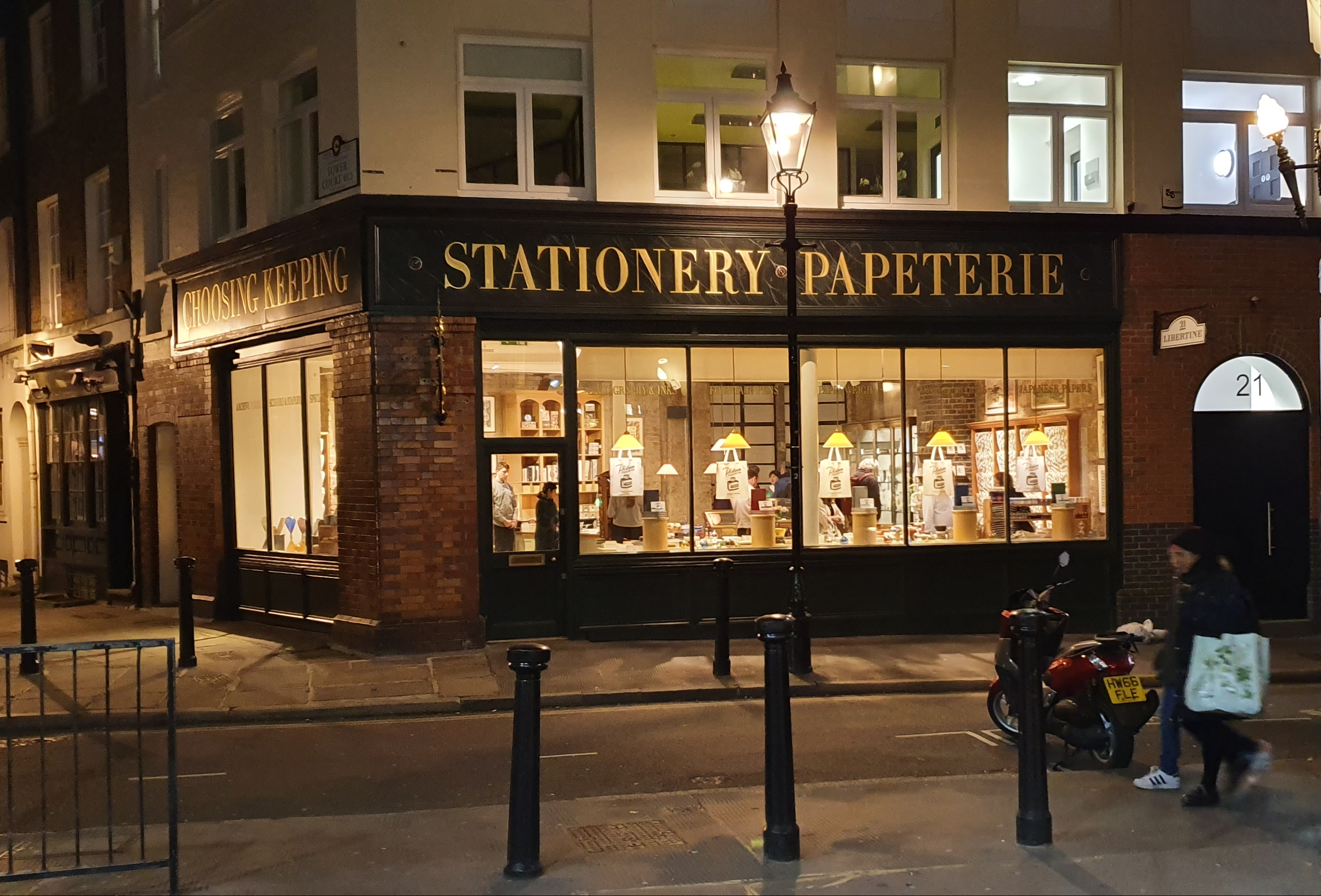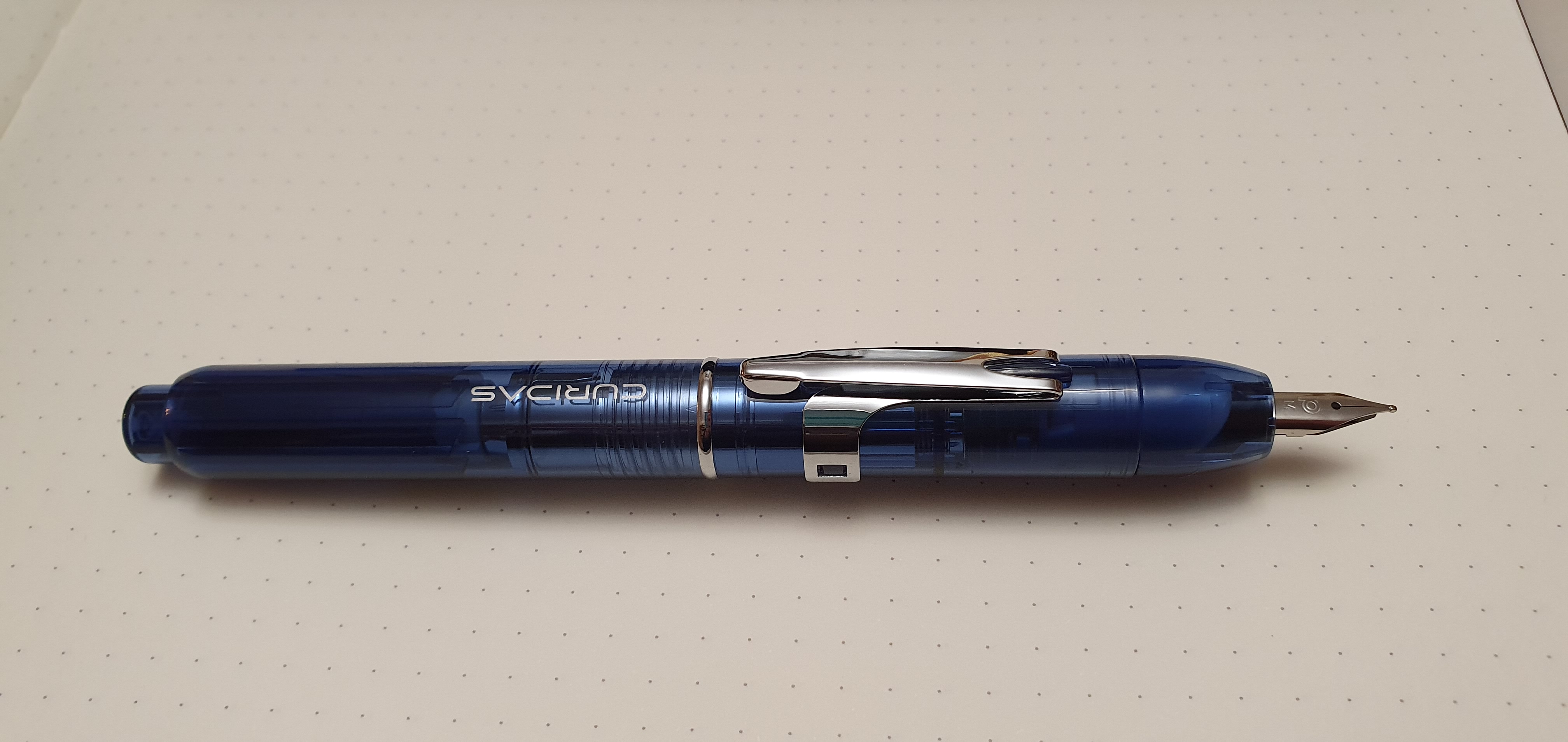The Paperchase store near my office no longer has a glass display cabinet of fountain pens. Its fountain pen offerings are now limited to a good selection of Lamy Safaris and Al-Stars, Kaweco Perkeos and Faber-Castell Grips, although it is good that these are still available. I enjoy browsing around the shop and often buy notebooks there.
Whilst visiting the shop one lunchtime recently, I came across a cup full of Pilot retractable pens, in a mix of blue or black, called the Synergy Point. These are not new pens but were new to me. I now gather that in other places they are called the Pilot Juice Up.

To my naked eye, the writing tip looked so fine that I thought it was a fineliner, although it is in fact a tiny rollerball and one of Pilot’s gel pens. I liked the look of the pen, with its rubber grip section and rather superior metal nose cone. I bought one each in blue and black.
Features.
So, this is an inexpensive, retractable, gel pen, with a fine point. It delivers a smooth line (depending upon the type of paper you are using) with minimal pressure. Pilot’s catalogue entry states “A unique pen which, thanks to the innovative “Synergy tip”, combines a fine line with a very smooth writing experience.” Although labelled as 0.5mm, this is the tip size. The line width is said to be 0.25mm. It is also refillable, (using Pilot’s BLS-SNP5 refill).

The gel ink in the blue version, is a pleasing shade of blue, which dries almost instantly and is also waterproof and so does not smudge.
When the tip is retracted, the push-button does not rattle, but it goes slack once the tip is deployed, which means that the button will rattle if you shake or turn the pen up and down. Also, there is an indicator window at the top of the barrel, just below the clip, comprised of five square dots, arranged like on a dice. If you look closely these are white when the nib is retracted and then go dark when the button is pressed down. As an indicator of whether the tip is out or not, you are better off looking at the tip itself or even the position of the button.
The pocket clip is plastic and rather soft and bendy and so not very secure and best not relied upon.
Size and weight.
The pen is about 140mm long when in writing mode. It weights about 12g. The girth is about 9mm. However the rubbery grip section and stepless barrel design make this a comfortable pen to use. The metal nose cone also places the centre of gravity further down towards the tip.
The writing experience.
The comfortable rubber grip, combined with the weighty metal nose cone and the lack of any wobble from the very narrow writing tip, all make for a feeling of precision when you are writing. Also, very little downward pressure is needed, although you do need a little to avoid skipping.

I have tried the pen on about half a dozen different notebooks. It is best suited to smooth papers without much texture as you do not have a large tip area to ride the bumps. However the ink flowed well. On all the papers I tried, any showthrough was minimal and there was no bleedthrough, even on papers which often struggle with ink. For example an Agenzio notebook (from Paperchase) has paper which suffers bleedthrough even with Waterman Serenity blue, but not with Montblanc Permanent Blue, Sailor Kiwa-guro or Platinum blue black, all of which are waterproof inks. The Synergy Point now gives me another bleed-free option for this brand of notebook.

Disassembly and refilling.
At first, before checking online, I tried to unscrew the nose cone. However I later learned that the pen unscrews at the barrel, and you just hold the grip section in one hand and the smooth plastic barrel in the other. It was tight the first time and I was worried about destroying the pen, but was encouraged by seeing photos online of the two parts separated. I anticipate that the refill will last for ages but it is good to know that refills can be purchased.

Likes and dislikes.
Plus points are the attractive design, sturdy build (aside from the flimsy clip and the rattling button) and the unusually fine writing tip for fine work. Having a waterproof ink is also useful. The familiar retractable design is obviously convenient and practical.
On the negative side, there is the feeble pocket clip and the rattling buttton. Also I would have preferred not to have a permanent bar code and a 13 digit number on the barrel but these are minor issues.
Pricewise, the blue model registered £4.25 on the cash till but then the black one registered as £5.00 which was slightly annoying. I would expect them to be the same price, whichever figure is correct, but it seemed fruitless to pursue this.
Conclusion.
I use ballpoint pens a lot for notes at work and a gel pen makes a pleasant alternative. The writing looks nicer and there is typically less pressure required yet you have all the convenience of a ballpoint pen. It is not a substitute for a fountain pen, which is still far ahead for line variation, shading and general writing pleasure. But the gel pen is a very useful writing tool to have and has its own merits.












